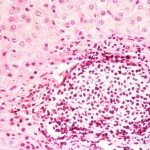Link to Pubmed [PMID] – 22952832
PLoS ONE 2012;7(8):e43974
During the last decade, the role of wildlife in emerging pathogen transmission to domestic animals has often been pointed out. Conversely, far less attention has been paid to pathogen transmission from domestic animals to wildlife. Here, we focus on the case of game restocking, which implies the release of millions of animals worldwide each year. We conducted a 2-year study in the Camargue (Southern France) to investigate the influence of hand-reared Mallard releases on avian influenza virus dynamics in surrounding wildlife. We sampled Mallards (cloacal swabs) from several game duck facilities in 2009 and 2010 before their release. A very high (99%) infection rate caused by an H10N7 strain was detected in the game bird facility we sampled in 2009. We did not detect this strain in shot ducks we sampled, neither during the 2008/2009 nor the 2009/2010 hunting seasons. In 2010 infection rates ranged from 0 to 24% in hand-reared ducks. The 2009 H10N7 strain was fully sequenced. It results from multiple reassortment events between Eurasian low pathogenic strains. Interestingly, H10N7 strains had previously caused human infections in Egypt and Australia. The H10 and N7 segments we sequenced were clearly distinct from the Australian ones but they belonged to the same large cluster as the Egyptian ones. We did not observe any mutation linked to increased virulence, transmission to mammals, or antiviral resistance in the H10N7 strain we identified. Our results indicate that the potential role of hand-reared Mallards in influenza virus epizootics must be taken into account given the likely risk of viral exchange between game bird facilities and wild habitats, owing to duck rearing conditions. Measures implemented to limit transmission from wildlife to domestic animals as well as measures to control transmission from domestic animals to wild ones need to be equally reinforced.

